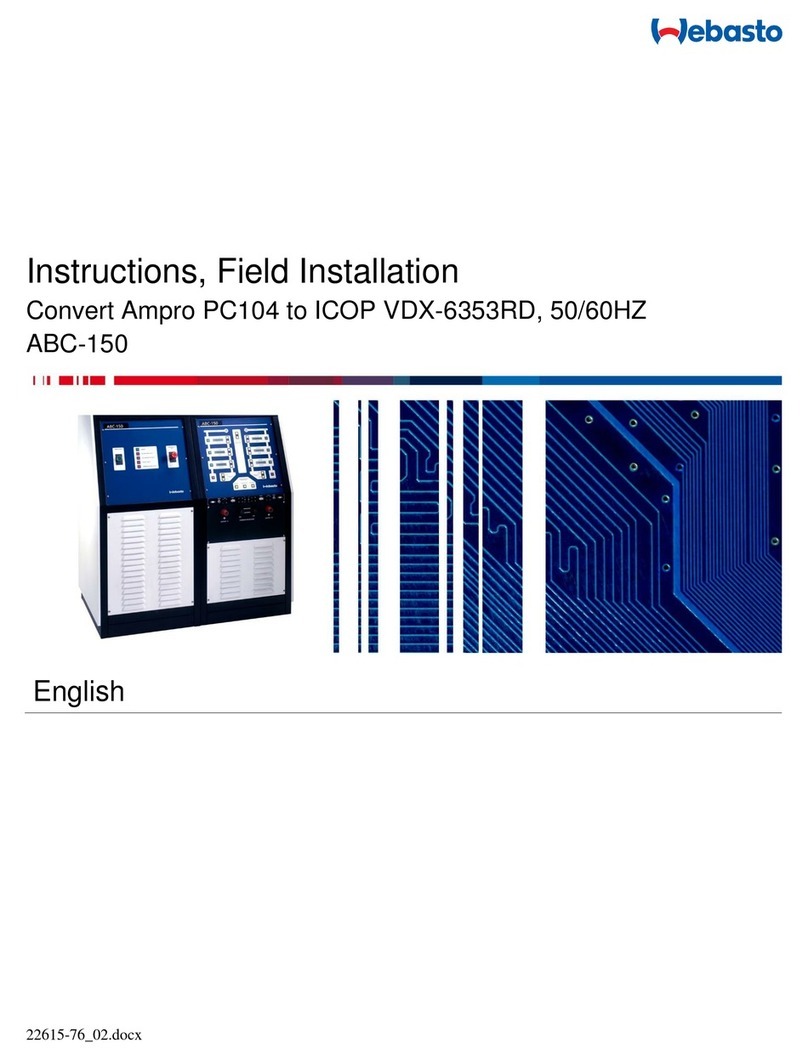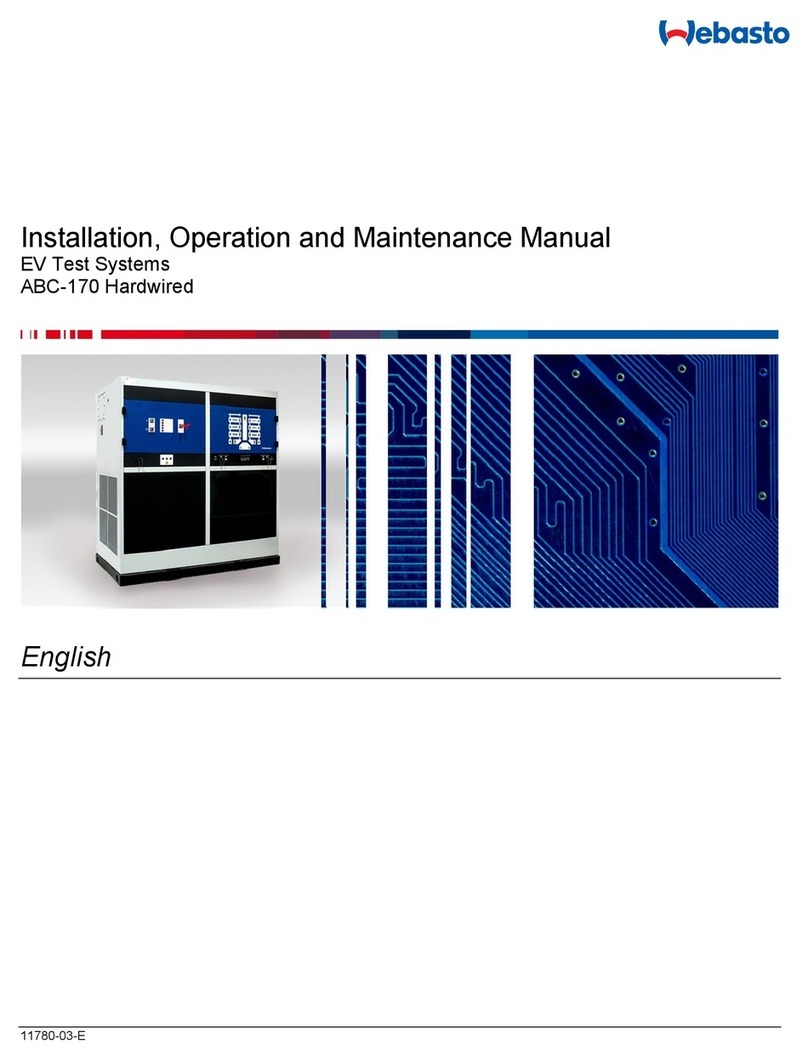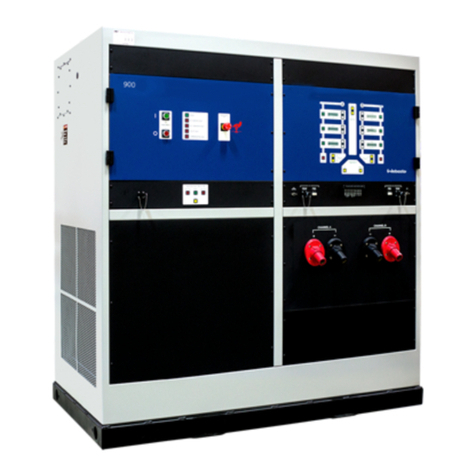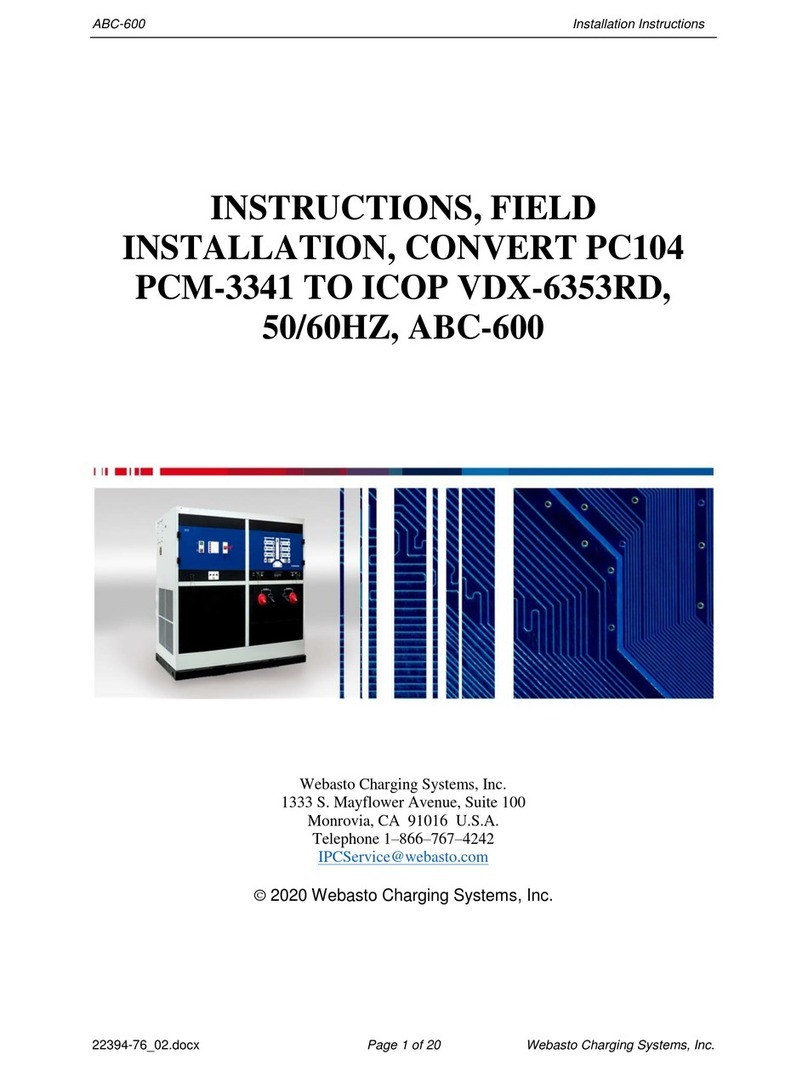
ABC-600 Installation, Operation and Maintenance
17032-03-D Page 10 of 51 Webasto Charging Systems, Inc.
1.3 ABC-600 Applications
The ABC-600 is flexible and may be used for a wide variety of DC power
applications. This section describes a few typical applications to illustrate the
different features of the ABC-600.
1.3.1 Constant Voltage Source
In Voltage Mode, the ABC-600 regulates the voltage of a given DC output
channel. The load may draw current from the ABC-600 at the regulated
voltage and the voltage level may be varied on demand, as with a
conventional DC power supply. In addition, the ABC-600 allows the user
to define voltage, current, and power limits to protect the load and maintain
safe operating conditions. The ABC-600 also allows for bi-directional
power flow (i.e., it allows the load to discharge current back to the utility),
unlike standard power supplies. However, if the utility voltage is interrupted
while running, the ABC-600 will cease operation.
1.3.2 Constant Current Source
In Current Mode, the ABC-600 regulates the current of a given DC output
channel. As in constant Voltage Mode, the load may draw or provide
current bi-directionally subject to user-defined limits.
1.3.3 Battery Quick Charging
Battery charging algorithms vary considerably depending on many factors.
A basic quick charging algorithm involves charging the battery at a constant
current rate (i.e., the maximum charge rate) until a certain voltage level is
reached and then maintaining that voltage level while the charge rate
decreases to a trickle charge. This can be accomplished very simply with
the ABC-600.
By setting the correct upper voltage limit and operating the system in
constant Current Mode, the ABC-600 will charge the battery at the desired
current until its voltage rises to the limit and will then maintain that voltage.
No manual adjustment is needed during the test.
More complicated battery charge algorithms can be achieved by modifying
the operating limits, modes and command values as the test proceeds.
Such algorithms can be implemented manually or they can be programmed
and run automatically using the ABC-600 Remote Operation System (ROS)
or other software packages.
1.3.4 Battery Pack Cycling
Battery packs used in electric vehicles (EV) endure constantly changing
demands. As the vehicle accelerates and brakes, the battery may go from
rapid discharge to charge and back again in a matter of seconds. In
addition, the daily driving and charging of an electric vehicle puts the
battery through a large number of deep discharge cycles, resulting in
shortened battery life.
Because of these factors, EV battery pack testing is highly important but
also very difficult. Simulating the demands of an electric vehicle on a
battery pack requires computer-controlled testing with a highly accurate
and responsive battery cycling system.


































